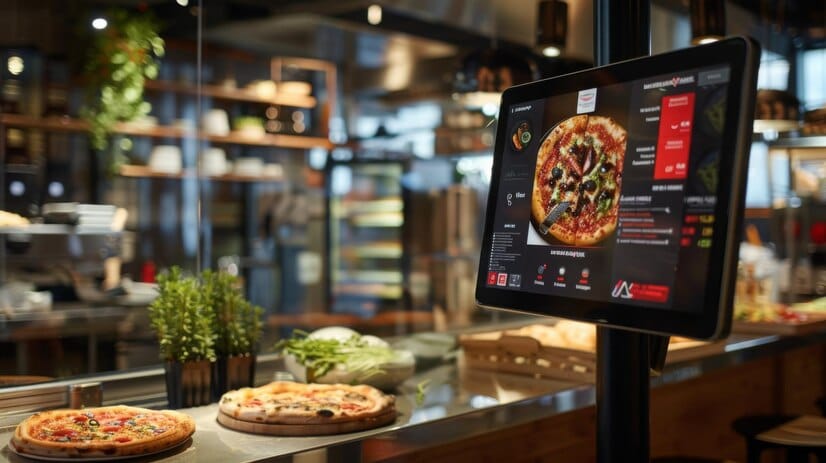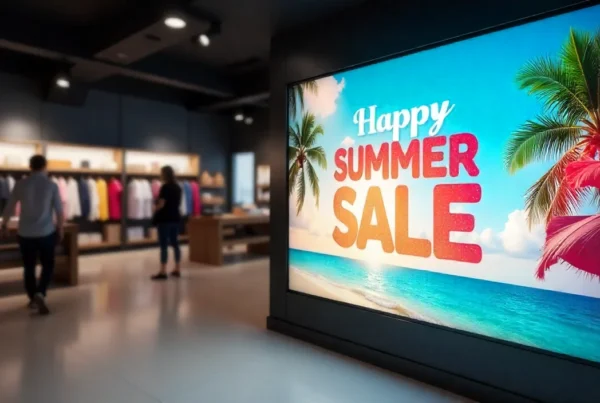When it comes to dining today, restaurants are not only an occasion but the occasion itself in many cases. The ever-intensifying competition and the customers’ changing expectations make restaurateurs look for new opportunities to improve guests’ experiences, optimize processes, and increase revenues. Among the most revolutionary technological inventions that have revolutionized the industry is the restaurant LED menu board. Gone are the days of static, printed menus; today’s restaurants, from fast-food chains to high-end dining establishments, are adopting digital LED menu boards to stay ahead in the competitive landscape.
This article will be uncovering what LED menu boards are all about, the advantages that come with them, and how they are revolutionizing the concept of restaurants.
What is a restaurant LED menu board?
A restaurant LED menu board is an electronic device that employs LED to display the restaurant’s menu in a more attractive manner. These boards are usually placed at strategic positions, for example, above the counter, in the dining area, or even outside the business premises, with the aim of attracting people from within and outside the business premises. Compared to conventional boards, the main advantage of using LED menu boards is the capability to change the information more frequently and use vivid HD graphics that can improve the customers’ perception.
LED menu boards are an improvement to conventional static menus that need physical change every time there is a change in the menu. ability to modify the content of the menu or a particular dish, price, promotion, or even an entire segment of the menu on the fly provides restaurant owners with a tool of great influence in addressing customer requirements and market demands.
The Evolution of Menu Displays
Traditionally, restaurants suffered from using limited and fixed forms of menu lists that were usually in paper, plastic or back lit boards. These had to be replaced as often as the menu details or the prices were revised, which resulted in not only inconvenience but also expense. Static boards were somewhat less flexible in design and could not always effectively grab the customer’s attention or advertise a particular promotion.
When digital signage was embraced and LED technology was incorporated into the market, menu boards became engaging and even more flexible. An LED menu board is appealing to the eye and serves as an added decoration to the restaurant in addition to providing a direct method for conveying messages to the consumers.
Key Benefits
LED menu boards in restaurants bring a lot of advantages to the owners of restaurants and customers. Here are some of the most significant advantages:
1. Dynamic Content and Flexibility
Another advantage of using an LED menu board is the option of having either static or dynamic content on it. Initially, it becomes very easy to change the menu items, prices, the current offer, or even a special event without having to reprint the menus or change the displays manually. This flexibility means that restaurant owners can easily adapt to dynamic trends or the availability of ingredients, for example, taking out a dish that has run out or putting up a new dish that is newly added.
As well, digital menu boards can include moving content such as a series of pictures, videos, or even customer testimonials, which makes the menu much more interesting and eye-catching to the customers. Such a level of interactivity can be beneficial for restaurant establishments to differentiate themselves in a very competitive environment.
2. Enhanced Customer Experience
An LED menu board that has been designed properly will have a better appearance and better organization of the options as compared to another poorly designed LED menu board. Clear and high-quality graphics, a wide choice of bright colors, and legible fonts allow the board to draw attention to the specials, promotions, or seasonal dishes in a moment.
Also, most of the LED menu boards come with touch-screen features, where the customer can select from the menu on the screen or even order from it. Not only does it improve the experience of the customer, but it also optimizes the time taken to order when the restaurants are busy.
3. Better chances of cross-selling
An LED menu board is a great marketing asset. The restaurant owners can use the positioning techniques to bring into focus the high-margin items, combos or LTOs. For example, a coffee shop may use an attractive notice of offer, a breakfast combo or a cheaper price for a dessert when bought together with the meal. Digital menus can be set to switch to the appropriate time of the day so as to display the most appropriate specials (Breakfast in the morning and Dinner in the evening).
So, research reveals that customers are more receptive to digital displays that result in higher sales and higher average order values.
4. Operational Efficiency
Preparation of traditional menu can be very cumbersome Managing a traditional menu is a big task. Any changes call for reprinting, and restaurants can hardly avoid using old menus until the new ones are prepared. LED menu board has the advantage that when changes are required, they are made immediately. The menu is flexible; restaurants may alter any element of the menu instantly due to changes in availability of ingredients, occasions such as festive seasons or based on consumers’ feedback. This can also be done from a distance through use of software and hence does not require a lot of time and energy.
In addition, digital menu boards also do not allow for human error that may result when manually changing conventional menus since all the information displayed is always up-to-date.
5. Cost-Effective in the Long Run
Although the cost of an LED menu board may seem high in the first instance, it is worthy of the investment. This negates the need for constant reprinting of new menus and promotional material, while the energy used by the LED is way cheaper than other backlit menu boards or printed signs.
Furthermore, LED menu boards can help restaurant owners do away with flyers, posters, or paper menus since all could be in one place.
How LED Menu Boards are Reshaping the Restaurant Industry
The use of LED menu boards has greatly changed the face of the restaurant business and how it is done. Because an increasing number of restaurants have introduced this technology, customers have come to expect an immersive, engaging, and even playful dining experience. Here’s how these boards are transforming the industry:
1. Aligning with the Digital Age
The society in which people are used to interacting through digital interfaces such as smart phones, smart TVs or even digital signage, the LED menu boards are in harmony with the current culture. They offer a better and more glamorous look/feel, which, from a branding perspective, are more attractive to clients in a restaurant.
2. Sustainability and Environmental Impact
In this way, LED menu boards help to alleviate the problem of excessive paper use within the restaurant industry. Customers are becoming more environmentally sensitive and hence restaurants can cut down their paper usage and be environmentally friendly.
3. Uniformity Across Several Branches
To any restaurant chain or franchise, an LED menu board is an opportunity to ensure that there is brand unity across different outlets. new promotion can be made in many outlets and be in harmony with the others so that the customer will feel like he or she is in the same place no matter where he or she is.
Conclusion
Restaurant LED menu boards are therefore a major advancement in the dining business. These digital displays are changing the ways restaurants interact with their customers, from enhancing operations efficiency to engaging customers. From dynamic content, better chances of upselling, reduced costs, and a more contemporary feel to the establishment, it is easy to see why LED menu boards are now a must-have in most restaurants today. The use of digital menu solutions is likely to grow with the rise of technology; thus, we are very likely to see more innovation in the future years regarding this issue.





